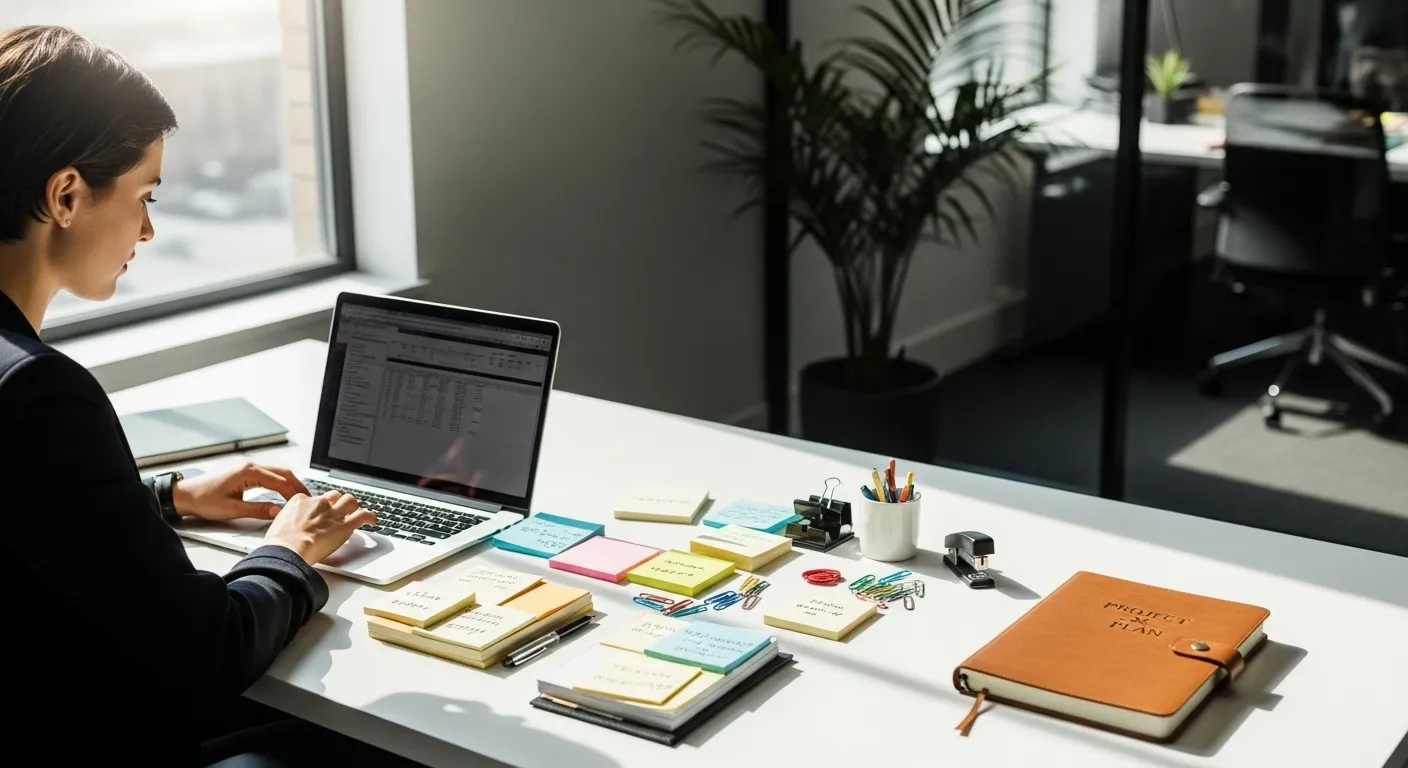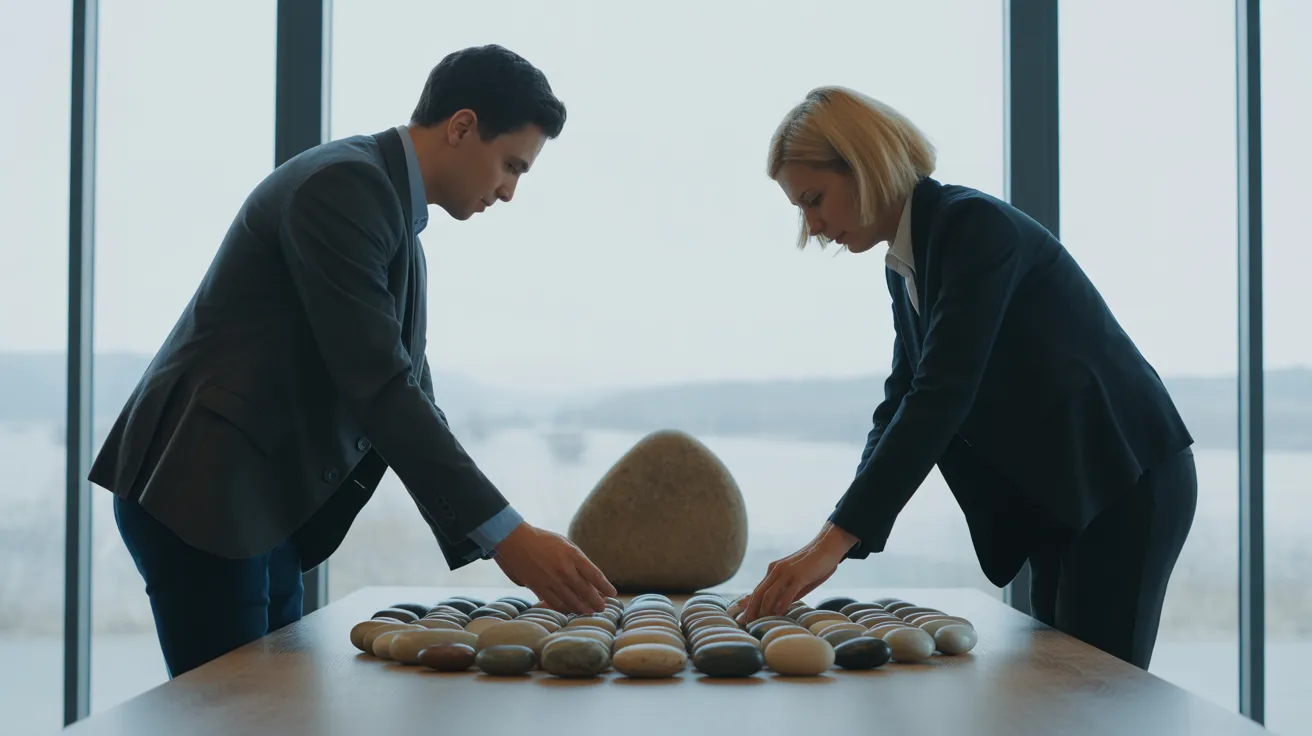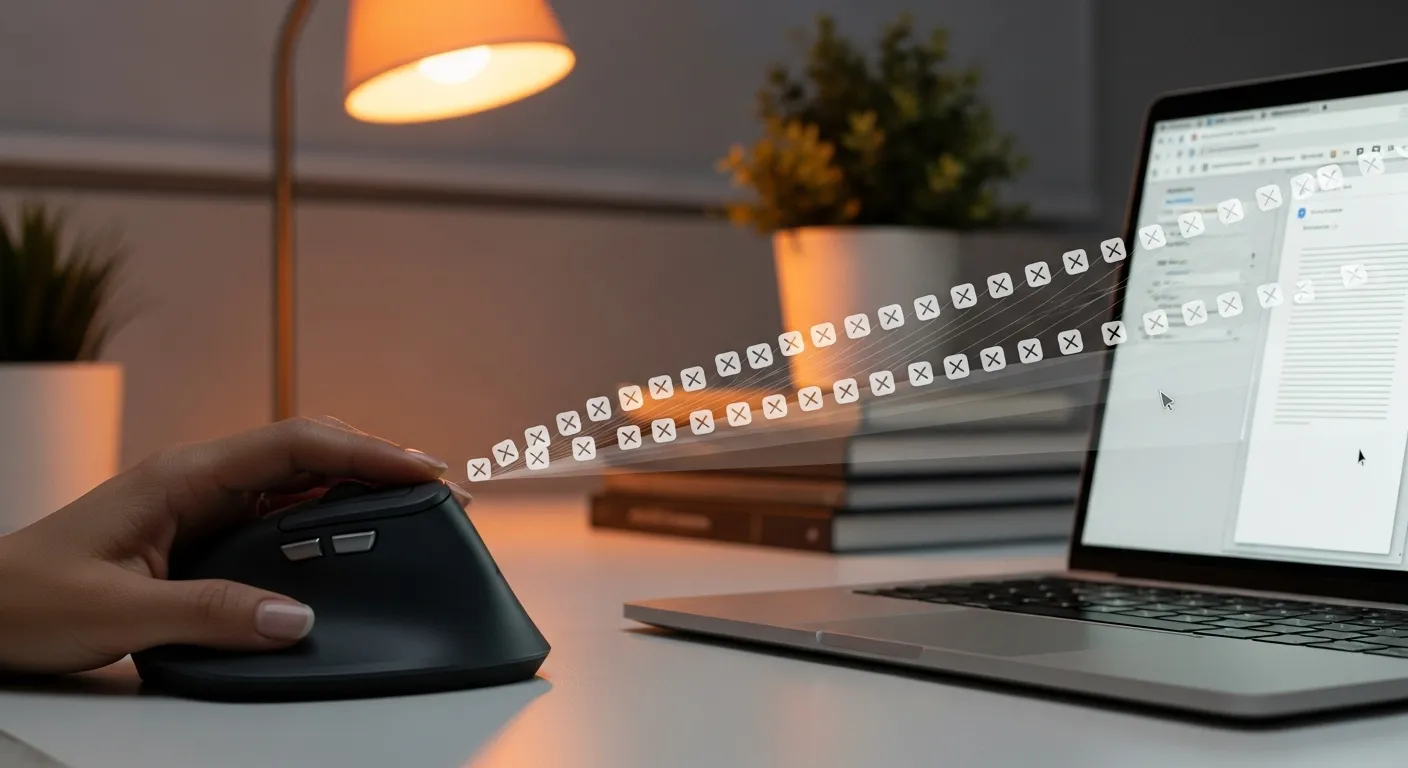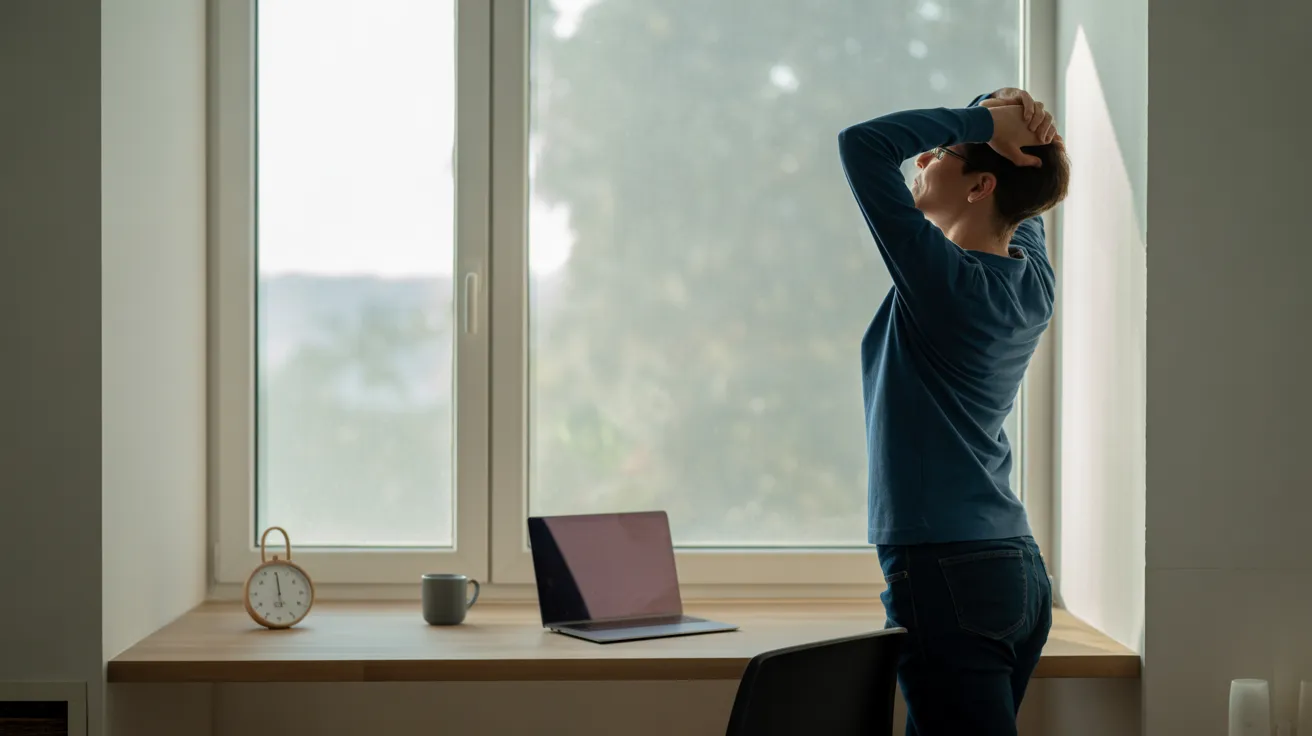
We’ve all been there. It’s 9:00 AM, you have your coffee, and you open your to-do list. Staring back at you is that one task. The big one. The one that’s vague, challenging, and critically important. Your brain, seeking comfort, immediately pivots. “Let me just clear out my inbox first,” it whispers. “Let me just respond to that one quick message.”
Three hours later, you’ve been incredibly busy. You’ve answered dozens of emails, attended a meeting, and organized your desktop. You feel productive. But that one critical task, the one that actually moves the needle on your goals, remains untouched. It looms over your afternoon, draining your energy and casting a shadow of low-grade anxiety over everything else you do.
This is the classic battle between heroic effort and sustainable systems. Heroic effort relies on a sudden burst of willpower to conquer that task at 4:00 PM when you’re already exhausted. It rarely works. A sustainable system, however, doesn’t rely on heroism. It relies on a simple, repeatable process that makes doing the hard thing the path of least resistance. That system is called “Eating the Frog,” and it’s one of the most powerful productivity hacks you can ever learn.
This guide isn’t about finding a magical new app or a complex workflow. It’s about a fundamental shift in how you approach your day, supported by tiny, low-friction habits. We’ll explore how to identify your most difficult tasks, create an environment that fosters deep work, and use simple tools to build unstoppable momentum before most people have finished their second cup of coffee.
📚 Table of Contents
- What Does “Eat the Frog” Actually Mean?
- Finding Your Frog: The Prerequisite for Success
- Preparing Your Environment: Setting the Stage for Focus
- The Toolkit for Eating Your Frog: Simple Tools, Major Impact
- Real-World Scenarios: Eating the Frog in Action
- The Art of Compounding and Avoiding Over-Optimization
- Frequently Asked Questions About the Eat the Frog Technique
- Your First Step: Start Small, Start Today
What Does “Eat the Frog” Actually Mean?
The phrase “Eat the Frog” comes from a famous quote often attributed to Mark Twain: “If it’s your job to eat a frog, it’s best to do it first thing in the morning. And if it’s your job to eat two frogs, it’s best to eat the biggest one first.”
In the world of productivity, the “frog” is a metaphor for your most important and challenging task of the day. It’s the task you are most likely to procrastinate on because it requires significant mental energy, creativity, or focus. The eat the frog technique is brutally simple in its instruction: identify that single, crucial task and complete it before you do anything else.
This isn’t just folksy wisdom; it’s grounded in practical psychology. Our willpower and cognitive resources are at their peak at the beginning of the day. Think of your mental energy like a phone battery. You wake up with a full charge. Every decision you make, from what to wear to which email to answer first, drains that battery. Researchers often refer to this as decision fatigue. By late afternoon, your battery is low, and the idea of tackling a complex, difficult task feels impossible.
The eat the frog method leverages your peak energy for your peak-priority work. Instead of wasting that precious morning focus on low-impact, reactive tasks like checking email or social media, you dedicate it to the one activity that will generate the most significant results. According to research bodies like the American Psychological Association (https://www.apa.org), managing cognitive load is crucial for effective performance.
The psychological benefit is just as powerful. When you successfully eat your frog, you get a massive sense of accomplishment before 10:00 AM. This floods your brain with endorphins, creating a positive feedback loop. The rest of the day feels lighter and more manageable because the hardest part is already behind you. You build momentum that carries you through smaller tasks with ease, transforming a day of anxious procrastination into a day of proactive achievement.

Finding Your Frog: The Prerequisite for Success
The biggest mistake people make with the eat the frog technique is misidentifying their frog. A frog isn’t just any task that is “hard.” Answering a hundred emails is hard, but it’s rarely your frog. Your frog is the task with the highest potential impact on your long-term goals. It’s about importance, not just urgency or difficulty.
So, how do you find it? You need a system for reflection. This is where the 15-Minute Weekly Review comes in. This is a non-negotiable appointment you make with yourself once a week, perhaps on a Friday afternoon or Sunday evening.
During this review, you don’t do work; you think about the work. Ask yourself three simple questions: What are my big goals for this month or quarter? What went well last week? And most importantly, what are the 1-3 most critical things I need to accomplish next week to move closer to my goals? The answers to that last question are your potential frogs for the upcoming week. From there, you can break them down into daily frog-sized actions.
For example, if a weekly goal is to “Launch the new marketing campaign,” the frog for Monday isn’t “work on campaign.” It’s a specific, concrete action like, “Write the final draft of the main ad copy.” This clarity is everything. You must know exactly what your frog is before the day begins.
Another powerful tool for understanding why this matters is the mini Time Audit. For just one or two days, keep a simple log of how you spend your time in 30-minute blocks. You don’t need a fancy app; a notepad will do. The results are often shocking. You might discover you’re spending two hours a day on “quick checks” of email and messaging apps, which is valuable time that could have been dedicated to your most difficult tasks.
A time audit provides the undeniable evidence you need. It shows you where your peak energy is currently going—often to low-value, reactive work. This data makes the case for reallocating that prime morning time to a predefined frog, proving that you do, in fact, have the time for how to do hard tasks first; it’s just being used elsewhere.

Preparing Your Environment: Setting the Stage for Focus
Even if you’ve correctly identified your frog, you can’t eat it in a distracting environment. The modern world is an endless buffet of interruptions designed to pull you away from deep work. Your phone buzzes, notifications pop up, and a cluttered desk screams of a dozen other things you “should” be doing. To succeed, you must intentionally architect an environment of focus.
This starts with the 10-Minute Desk Reset. At the very end of your workday, before you shut down, invest ten minutes to prepare for tomorrow’s success. Clear your physical desk of everything except what you need for your frog task. Close every single tab on your computer except the one document, spreadsheet, or application you will start with. If your frog is “Draft the project proposal,” the only things on your screen should be a blank document and your research notes.
The power of this ritual is immense. When you sit down the next morning, there are no decisions to make. There is no friction. The path of least resistance leads directly into your most important work. You don’t have to muster the willpower to ignore 20 open tabs; you just begin.
The second pillar of your focused environment is taming your biggest distraction: your smartphone. Implement the One-Screen Phone Tweak. This is a simple but profound change to your phone’s layout. Go through your home screen and move every single app that isn’t a pure utility (like the clock, calendar, or camera) into a folder on your second or third screen. This includes social media, news, email, and games.
Your home screen should be spartan, almost boring. The goal is to eliminate mindless, reflexive checking. By forcing you to swipe and open a folder to get to a distracting app, you introduce a tiny moment of friction. That brief pause is often enough for your conscious brain to ask, “Do I really need to do this right now?” It helps protect your peak morning focus from being hijacked by the endless scroll. This isn’t about digital minimalism as an aesthetic; it’s a practical strategy to make focus the default and distraction a deliberate choice.

The Toolkit for Eating Your Frog: Simple Tools, Major Impact
The eat the frog technique doesn’t require complex software. It’s about using the simple tools you already have with intention. These tools act as guardrails, keeping you on track when your motivation wavers.
First and foremost is your Calendar. A to-do list is a list of options, which can lead to decision fatigue. Your calendar is a plan for your time. Once you’ve identified tomorrow’s frog, you must give it a home. Open your digital or physical calendar and block out a specific, non-negotiable chunk of time to work on it. For most people, a 60-to-90-minute block at the very start of the day is ideal.
Here are the exact steps: Create a new event. Title it “FROG: [Insert Your Specific Task Name Here]”. Set the time, for example, from 8:30 AM to 10:00 AM. Set a reminder for 10 minutes before. Most importantly, you must treat this appointment with the same reverence you would a meeting with your CEO or a key client. It is an unbreakable commitment to your own progress.
Next is the humble Timer. This is your best friend for maintaining focus during your scheduled frog time. The technique of working in focused bursts is often called Timeboxing. It’s a simple rule: you define a task and a fixed amount of time for it, and you work on nothing else until the timer goes off. The sound of the timer starting signals to your brain that it’s time to work. The sound of it ending grants you permission to take a break.
You can use your phone’s built-in timer, a web app, or even a physical kitchen timer. The physical separation of a kitchen timer can be particularly powerful, as it keeps you from picking up your phone. Set it for your chosen block—say, 75 minutes—and make a solemn vow to not check email, messages, or anything else until it dings. This creates a container for your focus, making a large, intimidating task feel manageable.
Finally, consider the cumulative effect of small frictions. Fumbling with menus and mice can subtly break your concentration. Learning a few key Keyboard Shortcuts for your most-used applications can keep you in a state of flow. Whether it’s creating a new document, formatting text, or switching between windows, every second saved is a bit of cognitive load preserved for the actual work. These micro-efficiencies add up, making the process of doing the work smoother and less mentally taxing.

Real-World Scenarios: Eating the Frog in Action
Theory is one thing; practice is another. Let’s look at how the eat the frog method and its supporting productivity hacks work for two different types of professionals.
Scenario 1: The Busy Manager
Meet Sarah, a department manager whose calendar is a wall of back-to-back meetings from 9:30 AM to 5:00 PM. Her biggest challenge is finding time for strategic work, like planning the next quarter’s budget or mentoring her team leads. Her days are a whirlwind of reactive problem-solving, and she consistently pushes her most important work to the evenings, when she’s exhausted.
The Solution: Sarah uses her 15-minute weekly review on Friday to identify her single most important “deep work” task for the coming week: “Draft the Q3 Strategic Priorities document.” This is her weekly frog. She breaks it down into daily chunks. Monday’s frog is “Outline the main sections of the Q3 doc.”
Knowing her meetings start at 9:30, she schedules her frog time from 8:15 AM to 9:15 AM. On Sunday night, she does her 10-minute desk reset, closing all communication apps and opening a blank document titled “Q3 Strategy Outline.” She puts her phone in another room. When she sits down Monday morning, there is nothing to do but start writing. By the time her first meeting begins, she has already achieved her most important task of the day. The rest of the day’s meetings feel less stressful because she knows she’s already secured a major win.
Scenario 2: The Solo Maker / Freelancer
Now consider David, a freelance web developer. He has the opposite problem: a wide-open schedule. The sheer lack of structure makes it easy to procrastinate. He often spends mornings on low-value client admin or endlessly tweaking his own website instead of tackling the high-value work that grows his business, like pitching new clients or developing a new product.
The Solution: David adopts the 1-3-5 Rule to structure his day. This rule suggests planning to accomplish 1 big thing, 3 medium things, and 5 small things each day. His “1 big thing” is always his frog. During his weekly review, he decides his frog for the week is “Develop the user authentication feature for my new software project.”
On Monday, his frog is specifically “Write the code for the user registration form.” He blocks 9:00 AM to 11:00 AM on his calendar for this task. He uses a timeboxing approach, working in two 50-minute sessions with a 10-minute break in between. He turns off all notifications and uses his One-Screen Phone Tweak to ensure he’s not tempted to scroll. This structure prevents his flexible schedule from becoming a trap of indecision and ensures he makes consistent, meaningful progress on his most difficult tasks before the day’s distractions can take hold.

The Art of Compounding and Avoiding Over-Optimization
The true power of these productivity hacks is not in their individual application, but in how they connect and build on one another. This is the principle of compounding habits. You can chain these micro-habits together to create a seamless, automated workflow that leads directly to deep work.
This concept is often called “habit stacking.” You link a new, desired behavior to an existing, ingrained one. For instance, you could create a morning startup sequence: “After I pour my first cup of coffee (existing habit), I will sit at my desk and start a 90-minute timer for my frog task (new habit).”
An evening shutdown sequence could look like this: “When I close my laptop for the day (existing habit), I will immediately spend 10 minutes resetting my desk and digital workspace for tomorrow (new habit).” By linking these actions, you remove the need for constant decision-making and willpower. The sequence becomes automatic over time, making it easier to do the right thing than not to.
However, there’s a critical warning here: beware the trap of over-optimization. It’s easy to fall into a rabbit hole of “productivity porn”—spending more time reading about productivity, testing new apps, and tweaking your system than you do actually working. The goal is not to build a perfect, instagrammable system. The goal is to build a good enough system that consistently produces results.
If you find yourself spending 30 minutes every morning color-coding your to-do list instead of eating your frog, you’ve missed the point. The system should serve the work, not the other way around. Simplicity is key. A pen and paper, a calendar, and a timer are often more effective than the most complex suite of software.
Finally, remember that high performance is impossible without adequate rest. A tired brain cannot perform complex problem-solving. Prioritizing sleep is not a luxury; it is a fundamental component of any effective productivity system. Organizations like the National Institutes of Health (https://www.nih.gov) and the Sleep Foundation (https://www.sleepfoundation.org) provide extensive resources on the critical link between sleep and cognitive function. Eating your frog requires a well-rested mind.

Frequently Asked Questions About the Eat the Frog Technique
What’s more important: the right tools or the right habits?
Habits, without question. A sophisticated project management tool is useless if you don’t have the habit of reviewing it daily. Conversely, a simple notebook and the consistent habit of a 15-minute weekly review can be transformative. Tools should support well-designed habits, not replace them. Start with the habit first—like identifying your frog on a sticky note—and only introduce a tool when you feel a specific friction point that it can solve.
I tried to eat the frog, but I got distracted. How do I handle the high cost of task switching?
First, acknowledge that task switching is incredibly costly. Research shows it takes a significant amount of time to regain deep focus after even a brief interruption. The best solution is prevention through environmental design: the desk reset, the phone tweak, and timeboxing. But when distractions inevitably happen, don’t spiral. Simply acknowledge the interruption, close the distracting tab or app, take a deep breath, and restart your timer. The goal isn’t an unbroken 90 minutes of perfect focus; it’s about gently but firmly returning your attention to the task at hand as quickly as possible.
When should I quit a productivity hack if it’s not working?
Give any new hack a fair trial period, typically one to two weeks of consistent effort. During that time, observe its effects. Does it reduce friction or add to it? Does it leave you feeling more accomplished and in control, or more stressed and constrained? If a technique consistently creates more anxiety than it relieves, or if it simply doesn’t align with the realities of your job or personality, it’s okay to discard it. The goal of these productivity hacks is to make your life easier and more effective, not to adhere to a rigid ideology.
What if I have two equally important “frogs”?
This is a common sign that you need to go one level deeper in your prioritization. Ask yourself the powerful question: “If I could only accomplish one of these things today, which one would make tomorrow significantly easier or create more momentum?” Often, one task is a dependency for another. If they are truly, genuinely equal in importance and impact—a rare scenario—then the biggest risk is not choosing the “wrong” one. The biggest risk is spending an hour paralyzed by indecision. In that case, just pick one and start. Action creates clarity.
My frog is a huge, multi-week project. How do I “eat” that?
You don’t try to eat the whole frog in one sitting. For a large project, your daily frog is the single most important next action that will move the project forward. Your frog is never “Build the new website.” On a given day, it might be “Design the wireframe for the homepage,” or “Write the copy for the About Us page,” or “Set up the database.” Breaking down a massive, intimidating project into small, concrete, daily actions is precisely how you tackle difficult tasks without getting overwhelmed.

Your First Step: Start Small, Start Today
The “Eat the Frog” method is not a complex philosophy. It is a practical, repeatable system for ensuring that you dedicate your best energy to your most important work. It’s about shifting from a reactive state of being constantly busy to a proactive state of being truly effective. By tackling your most difficult task first, you create a ripple effect of accomplishment and clarity that transforms the rest of your day.
You don’t need to implement everything in this guide at once. The key is to start small and build momentum. Here are three simple actions you can take right now to set yourself up for success tomorrow.
1. Identify Tomorrow’s Frog. Before you finish your work today, take five minutes. Look at your project list and your goals. What is the one task that, if completed, would make you feel the most accomplished? The one that carries a little resistance but you know is crucial? Write it down on a piece of paper. Be specific.
2. Schedule It. Open your calendar immediately. Create a 60-minute appointment for the very beginning of your workday tomorrow. Name the appointment after the specific frog you just identified. Set a reminder. This is now the most important meeting of your day.
3. Do a 5-Minute Reset. You don’t need a full reset yet. Just take five minutes. Close all the browser tabs you don’t need for your frog. Tidy the physical space directly in front of your keyboard. This small act signals your intention to start fresh tomorrow on what matters most.
That’s it. The journey to mastering your productivity doesn’t begin with a giant leap; it begins with a single, intentional step. Eat your frog tomorrow, and experience for yourself the profound sense of control and accomplishment that comes from winning the day before it has even truly begun.
Disclaimer: The information provided in this article is for educational and informational purposes only and is not intended as a substitute for professional medical, psychological, or legal advice. Always seek the advice of a qualified professional with any questions you may have.






